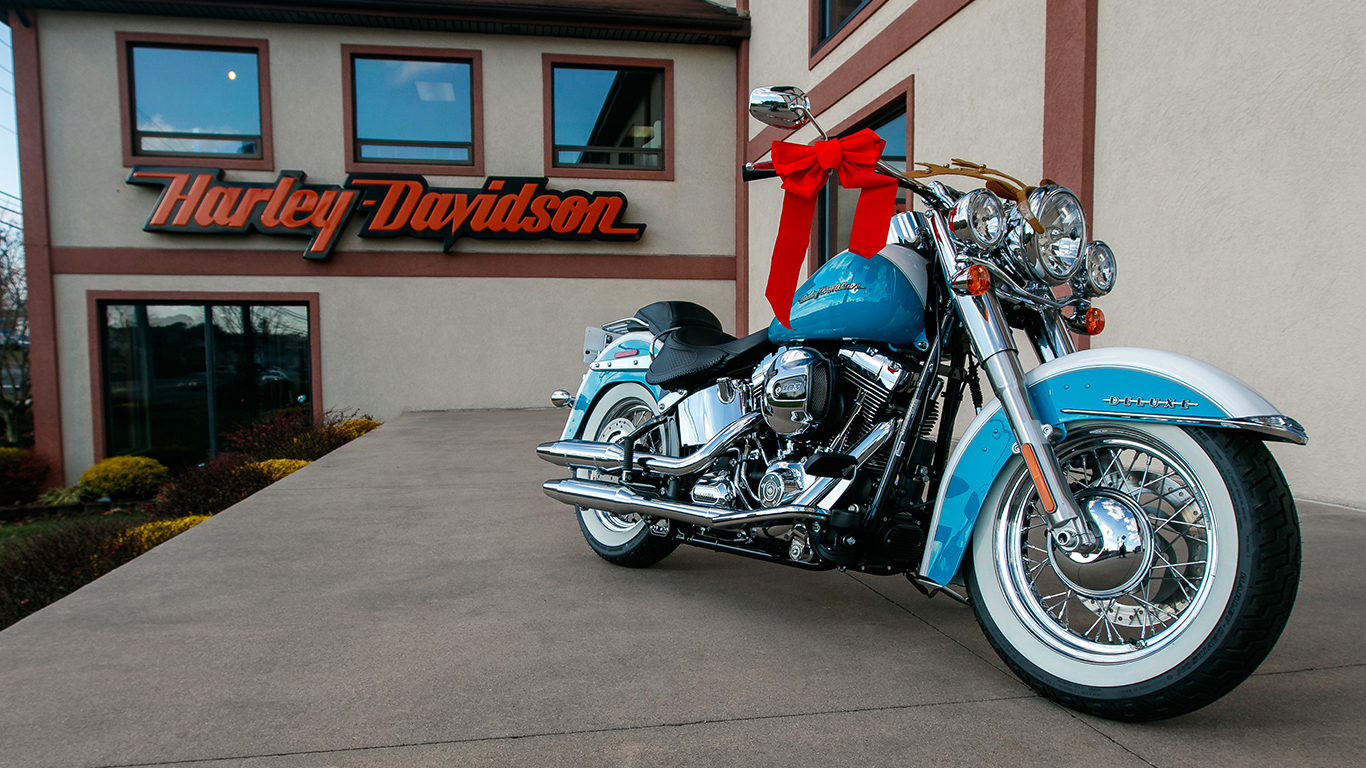Cars and Drivers
Analysts Continue to Dim Expectations for Harley-Davidson's Future

Published:
Last Updated:

Harley-Davidson Inc. (NYSE: HOG) recently reported disappointing sales trends, with domestic sales continuing to fall more than expected. The news that profits were up was dwarfed by news that Harley-Davidson was issuing a worldwide recall on roughly 238,300 motorcycles. What hurts about this recall is that the issue is a clutch problem, which now makes for multiple recalls tied to clutches in recent years.
The recall is considered a voluntary safety recall and is said to include models of Touring, Trike and CVO Touring models for years 2017 and 2018. It also includes some 2017 Softail models.
With a projected cost of about $35 million in the current fiscal quarter, a straight-line math implies a recall cost per unit of just under $150.
Several analysts have keyed in on Harley-Davidson’s recall and earnings report.
The independent research firm Argus maintained its Buy rating on Harley-Davidson, but the firm lowered its price target to $43 from $50. Argus addressed the motorcycle maker’s plans to target younger buyers:
In order to drive revenue growth and appeal to younger customers, Harley has launched a strategic growth plan called “More Roads to Harley-Davidson.” The company’s goal is to launch 100 new products by 2027. We have been impressed with the first of these new models, and note that Harley is also building an electric motorcycle, the LiveWire, that will be launched in 2019. The production model for the LiveWire was introduced at Harley’s 115th anniversary on Labor Day weekend. The company plans to produce additional electric models by 2022.
In June, CEO Matthew Levatich announced that the company would offer a range of EVs, including lighter motorcycles and possibly scooters and bicycles. The expanded lineup may have greater appeal for women customers than the company’s traditional motorcycles. We also believe that this wider range of models will help to attract customers who might otherwise prefer to purchase a “fully custom” motorcycle. Nevertheless, Harley is likely to face pressure from continued weak industrywide pricing as well as from higher production costs as it adds new models. On the positive side, the company is benefiting from rising sales in international markets.
UBS has a Neutral rating and a $42 price target. Several other target price cuts were seen as well:
As a reminder, Harley-Davidson was downgraded to Market Perform from Outperform and the target price was cut to $45 from $52 at BMO Capital Markets on October ahead of the earnings report. The firm had noted that the upside it expected did not materialize.
Shares of Harley-Davidson were last seen trading up 1% at $38.25 on Wednesday, but that was after Tuesday’s drop of about 2.3% to $37.87. Harley-Davidson has a 52-week trading range of $36.15 to $56.50.
Retirement planning doesn’t have to feel overwhelming. The key is finding expert guidance—and SmartAsset’s simple quiz makes it easier than ever for you to connect with a vetted financial advisor.
Here’s how it works:
Why wait? Start building the retirement you’ve always dreamed of. Click here to get started today!
Thank you for reading! Have some feedback for us?
Contact the 24/7 Wall St. editorial team.